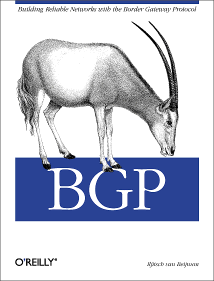
|

|

|
|
Home ·
BGP Expert Test ·
What is BGP? ·
BGP Vendors ·
Links ·
Archives ·
Books ·
My New BGP Book | ||
 (advertisement)
(advertisement)
| ||
|
What makes for an undeployable protocol? (posted 2014-11-09)
I'm in Honolulu for the IETF meeting this week. As always, on sunday morning before the meeting proper starts, there's the IEPG, where there's always interesting stuff being presented, usually from the operational side of networking. Today, there were talks about IPv6 packets with extension headers being dropped, routing table and packet size issues by Geoff Huston, and a discussion on Shim6 and Multipath TCP (MPTCP) failure recovery by Brian Carpenter. All good stuff. However, at the end of Brian's presentation, Lorenzo Colitti thanked Brian for the interesting presentation about the performance of undeployable protocol A vs undeployable protocol B. I kind of get why Shim6 and MPTCP are considered undeployable, because you need to have addresses from two different ISPs, and you need to make sure that packets with addresses from ISP 1 go to ISP 1 and those with addresses from ISP 2 to ISP 2. If not, BCP 38 ingress filtering will block the packets. The trouble is that the RIRs started giving out provider independent IPv6 addresses shortly before Shim6 was finished so larger networks simply use those, Shim6 never got any traction and so if you want to use it now you'll find that nobody else uses it, and you need it at both ends for it to work. It's still somewhat early days for MPTCP, but it doesn't seem to be setting the world on fire, either. But Lorenzo was talking about the fact that MPTCP uses TCP options that are filtered out by firewalls. Brian already mentioned that the Shim6 extension header is also often filtered, and suggested that probe packets should look like normal data packets. However, when both of these were designed, those issues were considered. Obviously it would have been great if we could have implemented these two protocols without the need for additional options or headers, but I don't see how that would have been possible. So the next best thing was to make sure that if the options, or the packets containing options, are filtered, communication still works without the benefits of Shim6 or MPTCP. This means the protocols were never undeployable: you can turn them on by default without any issues. If the headers/options are filtered, you simply don't get any benefit, but everything still works. For paths where the options/headers are left alone, Shim6 and MPTCP get to do their thing and you benefit from being able to use additional paths. Over time, hopefully firewall operators realize these protocols don't cause any harm and stop filtering them. Unfortunately, there are protocols that really do turn out to be undeployable, because firewalls or bad implementations break any communication that uses those protocols.
|
